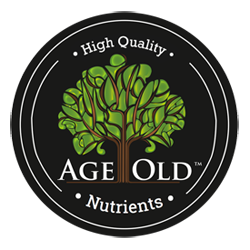Creating and Maintaining Healthy Soils
For the better part of the last century, during the advent of industrial agriculture, soil quality was mainly judged on one specific characteristic. This was by its overall level of fertility, the concentration of plant-available essential elements and mineral nutrients. This is indeed an important factor in determining a soil’s ability to sustain adequate plant growth. Still, many growers prefer to take a different, more biodynamic approach when accessing the quality and health of the ground we grow on.
During the 1970s and 1980s, organic gardening and soil management techniques experienced a revival in popularity that has continued to this day. This method of crop production focuses less on standard measurements of soil fertility and more on nurturing the soil’s biological profile, which in turn has a positive effect on a soil’s ability to support healthy plant growth. By viewing the soil as a living system instead of just an inert growing medium, organic growers understand that maintaining populations of biologically active components such as bacteria, fungi, nematodes, and earthworms can lead to soils that contain enough energy and fertility to house any actively growing plant.
Soils that are maintained in a manner that supports higher levels of biological activity tend to yield plants that are more tolerant to external stressors such as heat, drought, insect/animal intrusion, and even disease. Allowing the living components of the soil to perform their specialized evolutionary tasks like organic matter decomposition and nutrient mineralization helps to create a soil that is not only nutrient-rich, but it’s also high in oxygen, leading to healthier root growth. An oxygen-rich growing environment that is consistently cycling organic materials into plant-available forms of elemental nutrients is an ideal canvas on which to grow a high-yielding garden. The trick is creating the type of soil profile that allows for this activity to thrive.
All living creatures require, at a minimum, the following to survive and multiply: a food source, oxygen, and water. The microorganisms and other tiny creatures residing in the soil are no exception to this. When actively growing plants are present the majority of microbial life will exist near the root zone or rhizosphere where they will consume the sluffed-off pieces of dead roots and exudates secreted from the roots such as complex carbohydrates in the form of sugars. As gardeners, we can also add organic food sources to the soil with the goal of increasing the populations of beneficial organisms. Freshly composted materials, mulched leaves or grass, and other organic products such as sea kelp can all serve as fuel for a long list of soil-dwelling creatures. The nutrients present within organic matter exist in an organic matrix of sorts and are held together with a strong molecular carbon bond. These nutrients are not readily available for plant roots to access. Microscopic bacteria and fungi, with the help of specific enzymes, will digest or breakdown these bonds to release and mineralize the elemental nutrients within. This raises the natural energy of the soil and provides plants with the nutrition they need to grow.
Soils that have heavy clay content will tend to become more compacted throughout the years. This compaction lowers the oxygen content of the soil and diminishes microorganism and root growth alike. However, these types of soils can be amended through the years by adding compost, mulched leaves or grass, and other organic matter. By tilling these products into the soil at the beginning of each season a grower can minimize compaction and improve the tilth of the soil. Tilth is a measurement of how workable a soil is and a strong indicator of how much oxygen is present. Amending a hard clay soil will require tilling which can have a negative effect on microorganism populations, especially fungi. But by working with the soil to create the desired environment, the populations will return and thrive each year. Microbial inoculants can also be added to the soil to aid in recolonization. A good way to go about amending a clay soil is to mulch leaves in the fall, spread them over an empty garden bed and then till them in when the ground is workable in the spring. This will improve soil aeration as well as provide a food source to beneficial microorganisms. Another method that can be used to achieve this result is to grow a late-season cover crop that can be tilled under come spring. As the seasons roll along more and more earthworms will be seen upon tilling, and they will work throughout the year to help improve the quality of the soil. Creating a healthy, microbial rich soil in this situation may take several years, but in the end, it will all be worthwhile and plant growth will be stronger than before.
Maintaining a healthy soil profile using a more biodynamic approach is a process that takes place year after year. It needs to become a habit. To ensure that the microorganisms and other tiny lifeforms continue to thrive year after year they will need to be nourished and tended to. Adding organic matter in some form or another will provide them with a consistent food source. Organic matter will also provide plant nutrients over time as they are broken down within the soil to their constituent elements. Many of these elements will become available nutrients to the plants. Depending on the material used, the nutrients yielded, in the end, will vary. For instance, blood meal, which is high in protein and amino acids, will eventually become an available source of Nitrogen: a major component of proteins and amino acids. Likewise, bone meal will become a reliable source for calcium as well as some phosphorus. Reading product literature and consulting with a local greenhouse or organic gardening supply employee can be helpful when determining which type of organic material is best for the situation. Having your soil tested by a local university extension lab will also help you determine which nutrients the soil is lacking. Picking a product that is most fitting to the garden’s needs will benefit both the living soil organisms and the growing plants alike. Crop rotation from year to year is also a great way to create biodiversity in the soil as different species of bacteria and fungi are often attracted to certain types of plants.
I will add this, however, growing a more biodynamic garden does not mean you have to cut out inorganic salt-based mineral nutrients altogether. These fast-acting, easy to use fertilizers can provide an important function if an identifiable nutrient deficiency occurs and persists. Applying a small amount of inorganic fertilizer through a foliar application can help reverse the deficiency while doing minimal harm to soil biology. I only recommend doing so if the need truly arrives and the deficiency is adversely affecting plant growth and development.
To this very day, large scale, industrial agriculture is slow to embrace a more biodynamic method of crop production since the cost and ease of using generic synthetic fertilizers are still so economically viable. But this doesn’t mean that we as conscientious growers can’t practice these proven methods in our own gardens and always continue to work towards creating healthier soils and even healthier selves.


